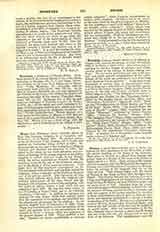

Drusipara, a titular see in Thracia Prima. Nothing is known of the ancient history of this town, which, according to Ptolemy, III, 11, 7, and Itiner. Anton., was situated on the route from Adrianople to Byzantium. Under Maximian, St. Alexander suffered martyrdom there (Acta Sanct., May, III, 15). In the time of Emperor Mauritius the city was captured by the Khakan of the Avars, who burned the church and destroyed the relics of the martyr (Theophyl. Simocatta, VII, 14, 15). Drusipara was at first an episcopal see, suffragan of Heraclia (Lequien, Or. Christ., I, 1131, etc.); in the eighth and ninth centuries it became an independent archbishopric, which must have been suppressed during the Bulgarian invasions. In two “Notitiae Episcopatuum” Mesene appears as a later name for Drusipara; at Mesene in 1453 died the wife of the famous Grand Duke Notaras (Ducas, Hist. Byz., 42). Mesene is today a little village, with 500 inhabitants, east of Karishtiran in the vilayet of Adrianople.
S. PÉTRIDÉS

